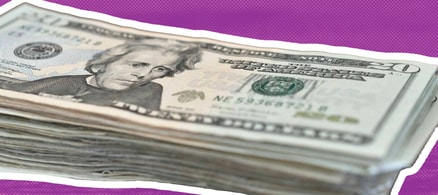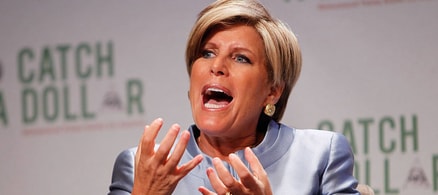The short version
- Crypto retirement investing is already possible through self-directed IRAs (SDIRAs) and will soon be possible inside Fidelity's 401(k) plans.
- SDIRAs such as Bitcoin IRA and Kingdom Trust allow you to hold and sell crypto assets within your IRA.
- Holding crypto on a retirement account allows you to diversify; however, crypto is volatile, and self-directed IRAs often have higher fees than traditional retirement accounts.
How to invest in crypto inside a 401(k) plan
The primary obstacle to buying crypto inside a retirement account is that few accounts permit it. When it comes to 401(k) plans, there are very few. That’s because 401(k) plans are standard programs maintained by employers. Investment choices are limited to the basics, and sometimes that includes no more than a handful of preselected funds.
Recently Fidelity announced its Digital Assets Account (DAA). This 401(k) is an industry first and it lets employees include Bitcoin in their core investments. This DAA will hold the Bitcoin on the Fidelity Digital Assets custody platform that was launched in 2018.
The program is still rolling out; Look for the DAA to become available to employers in mid-2022 and for more cryptocurrencies to be added in the future.
How to invest in crypto inside an IRA
There's a bit more wiggle room when it comes to IRAs – but not much!
Popular IRA plans, such as those offered by major investment brokers like Charles Schwab and Vanguard, make no accommodation for direct investment in crypto.
But there is a very highly specialized class of IRAs – known as self-directed IRAs or SDIRAs – that can accommodate crypto investments.
Read more: Best IRA Accounts – The Top Picks for 2022
What is an SDIRA?
If you believe holding a position in crypto makes sense for your retirement portfolio, the best option is to open an SDIRA account. But that may not be quite as easy as it sounds.
SDIRAs work like regular IRA accounts but have some special considerations no investor should ever ignore. Let’s start by defining precisely what an SDIRA is.
There’s a bit of confusion with the term “self-directed.” After all, you can have a self-directed IRA account with a major investment broker. It’s simply an account where you make all the investment decisions, including security purchases and portfolio composition.
But an SDIRA takes the self-directed concept much further. An SDIRA account is so “self-directed” that you can hold assets that aren’t permitted in a regular IRA account. That includes real estate, gold and silver bullion, tax liens, foreign currency, and even artwork.They allow you to hold any retirement investment that isn’t prohibited by the IRS. And that list of prohibited investments is pretty short; it’s generally limited only to collectibles, loans and life insurance policies.
They allow you to hold any retirement investment that isn’t prohibited by the IRS. And that list of prohibited investments is pretty short; it’s generally limited only to collectibles, loans and life insurance policies.
In most other respects, SDIRAs work like regular IRAs. You can contribute up to $6,500 per year, or $7,500 if you are 50 or older. Distributions taken after reaching age 59 ½ are taxable as regular income. Distributions taken sooner are subject to regular income tax, plus a 10% early withdrawal penalty. And you’re always free to hold more traditional investments in an SDIRA, including stocks, bonds, and funds.
SDIRA complications
Be aware that SDIRAs are much more complicated investment accounts than regular IRAs.
Small, obscure trustees typically offer them. Many specialize in certain assets, such as real estate or precious metals, while others allow you to hold any permitted asset you want.
Fees are higher in an SDIRA than in a regular IRA, largely because you purchase certain asset classes from third-party providers. They also offer little in the way of direct support. Whichever asset class you choose, you’ll need to educate yourself on how it works and the risks.
There are also severe IRS penalties if you participate in prohibited transactions. For example, the IRS will impose a 15% penalty for a violation. If that violation is not corrected, they can invalidate the plan and set a 100% penalty on the amount of the violation.
In addition to prohibited transactions penalties can be imposed for any activity construed by the IRS as a non-arm’s-length transaction. This includes any transaction that will directly benefit you or another party outside the IRA. That includes transferring or selling personal property to the plan, borrowing money from it, pledging the plan as security for a loan, or buying any property or asset within the plan for personal use.
SDIRAs for crypto
Scores of companies offer SDIRAs, and some of them also permit buying crypto inside the plan. But since crypto is a unique asset class, your interests will be better served if you lean toward a trustee who specifically focuses on crypto investing.
Bitcoin IRA
Bitcoin IRA launched in 2016 specifically to accommodate crypto investors. It offers more than 60 cryptos, including Bitcoin, Ethereum, Litecoin, Cardano, and Zcash. You can buy and sell crypto online 24 hours a day, seven days per week. There is a minimum investment requirement of at least $3,000.
It even offers up to $700 million in custody insurance. And though the name is Bitcoin IRA, they also offer a Bitcoin 401(k) and a Bitcoin Roth IRA. It also recently added physical gold to the platform investment options. The company claims to have over 100,000 users and has processed more than $2 billion in transactions.
Alto CryptoIRA
Alto CryptoIRA is another SDIRA specializing in crypto. Alto has partnered with Coinbase to facilitate trades inside these accounts which means that clients are able to buy and sell over 150 cryptocurrencies. The company also announced in October 2021 that it would be eliminating account management fees on its CryptoIRA. You can learn more about what this account offers in our full Alto CryptoIRA review.
You can open an account online with either trustee but be sure to do a due diligence check on all SDIRAs. Start with a FINRA Broker Check, then check with the Better Business Bureau and other sources.
Also, be thoroughly familiar with funding requirements. For example, you cannot transfer crypto or other assets you currently hold into a new SDIRA account. You must fund the account with cash, then make the purchases within the account. Pay close attention to all account requirements to avoid IRS penalties.
Traditional investment brokers that allow crypto investing
Not surprisingly, several investment brokers that offer IRAs, including SoFi Invest and Interactive Brokers, offer crypto trading. However, neither permits crypto investing within IRA accounts. But progress is on the horizon in the traditional IRA space.
At the moment, TradeStation is one of the few mainstream IRA trustees that allows crypto investing. They offer commission-free trades of stocks, options, and ETFs and the ability to buy, sell, and trade crypto with no custody fees. You can choose either a traditional or a Roth IRA account.
Robinhood is an investment app that also allows you to invest in crypto, as well as stocks and funds. They also just started offering IRA accounts.
Should you buy crypto inside a retirement account?
Just because you can buy crypto inside a retirement account doesn’t necessarily mean you should. There are compelling arguments on both sides.
Potential benefits
On the one hand, crypto has been perhaps the best performing investment class since its launch in 2009. During that time, Bitcoin went from roughly $1 to its current valuation in excess of $40,000. If that performance continues in the future, a minimal investment position can seriously juice an IRA return.
As crypto gains legitimacy in the investment world, it’s increasingly seen as a way to diversify. Since financial assets are largely correlated with one another, there are truly few asset classes that hold the potential to perform well when mainstream investments are tanking. In that respect, crypto may create a better balance in a portfolio.
Biggest risks
There are plenty of negatives that come with crypto investing as well. First, crypto has only been around since 2009. There hasn't been a serious bear market since, and it remains uncertain how well crypto will perform in a protracted bear market or a market crash.
Apart from general fluctuations in the financial markets, crypto has shown extreme volatility. We’ve watched it double in price, only to fall in half in just a few months.
There’s also the reality that crypto isn’t backed by any institutions, like governments or banks. Its value is determined entirely by the investment public's faith in it. There’s no FDIC insurance and no productive entity generating revenues behind it.
And of course, there are also the risks associated with SDIRA accounts. Trustees are small and not well known. The potential for account violations and penalties is real. And many trustees charge fees that are much higher than traditional IRA account custodians.
The bottom line
The decision to buy crypto inside a retirement account is strictly personal. If you believe it’s the right choice, do so only with a small percentage of your portfolio. While crypto’s performance has undoubtedly been impressive in recent years, there’s no guarantee that it will continue in the future.
A small position may be sufficient to get you a significant return on your portfolio. But a large position could cripple your account if crypto crashes or even disappears. There are no guarantees with any investment, but this may be even more true of crypto.
Advertiser Disclosure – This advertisement contains information and materials provided by Robinhood Financial LLC and its affiliates (“Robinhood”) and Moneywise, a third party not affiliated with Robinhood. All investments involve risk and the past performance of a security, or financial product does not guarantee future results or returns. Securities offered through Robinhood Financial LLC and Robinhood Securities LLC, which are members of FINRA and SIPC. Moneywise is not a member of FINRA or SIPC.”
Further reading:









